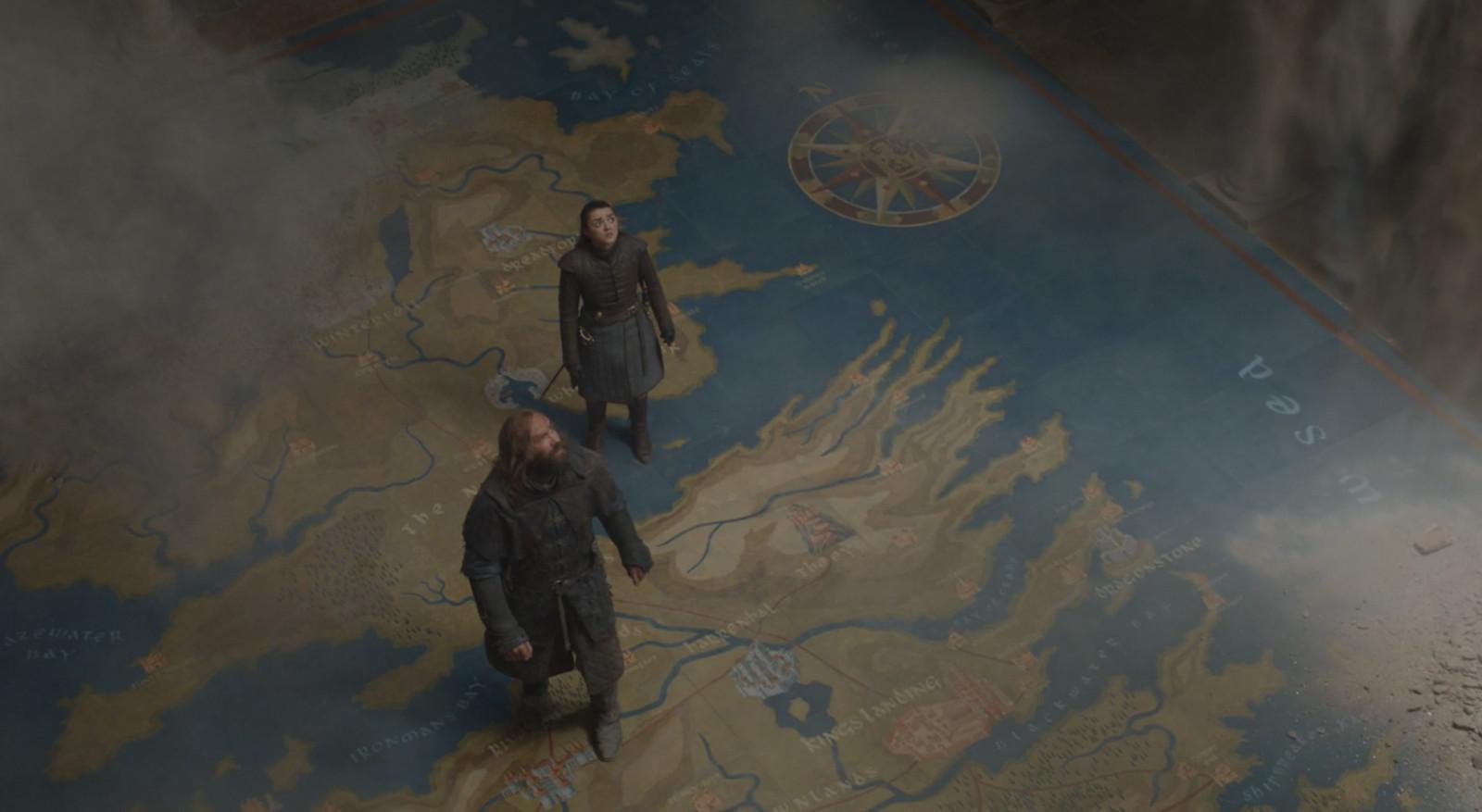
Ever since the Season 1 showdown between the Hound and his big brother, the Mountain (a.k.a. the strongest man in the world), Cleganebowl has been the most hyped fight in Game of Thrones. For a while, as the Hound ventured north, farther and farther away from King’s Landing—and as the Mountain went from squashing eyeballs to being a quasi-zombie—it seemed as though the showdown would not be in the cards. Then, after years of fearing the fight was off, a Season 7 scene at the Dragon Pit suggested that it was back on the menu, After eight years of waiting, on Sunday night, it finally happened: We got Cleganebowl, and it was as delicious as a couple of hard-won chickens.
At the top of a crumbling tower on a stairway to nowhere in a city consumed by flames, the two most fearsome characters in Game of Thrones met in a duel, against a setting that cocreator David Benioff described as “apocalyptically beautiful” in an Inside the Episode segment.
The fight was full of callbacks: The Mountain’s crushing of Qyburn was a fitting sequel to Cersei’s Power Is Power speech, a fulfillment of Pycelle’s warning to Cersei, and a nonverbal version of his little brother’s “Fuck the King” declaration all at once. His digging his thumbs into the Hound’s eye sockets was an obvious callback to what he did to Oberyn Martell in one of the show’s most memorable moments. And the Hound even followed Bronn’s suggestion that the only way to beat the Mountain would be to “get him off his feet, somehow”:
Most poetic, though, was the final moment of the fight, as the two brothers plummeted from the Red Keep into a sea of fire, returning to the inciting incident of the rivalry. As the Hound explained to Arya in Season 4, when the two were children, Gregor shoved his face into a fire “like a juicy mutton chop” for stealing one of his toys. (Though, as the Hound was quick to clarify, in a pained tone: “I didn’t steal it, I was just playing with it.”)
The Hound came a long way. In Season 2, he tucked tail during the wildfire-infused Battle of Blackwater, unable to stand the heat. In Season 3, he engaged in an actual fire fight against Beric Dondarrion. By Season 7, he was willingly staring into flames alongside Beric, foreseeing the march of the army of the dead. His arc came full circle Sunday night, as he tackled his brother into the bowels of hell. It was perhaps the perfect, if not only, way for him to go—killing an unkillable beast; fulfilling a lifelong mission. Though it should be noted that, according to the show’s creators, destiny wasn’t the thing that compelled the Hound to push his brother out of the Red Keep. It was pure hatred. “The one thing with the Hound stronger than his fear of fire is his hatred of the person who put that fear there in the first place,” cocreator D.B. Weiss said on an Inside the Episode segment on Sunday night.
But in memorializing the Hound, that hatred shouldn’t be the focus; his conversation with Arya before the fight began should be. Four seasons after their countryside comedy duo was split up, the two team up again and leave Winterfell together at the end of “The Last of the Starks,” both on a mission to kill (the Mountain for the Hound, Cersei for Arya). As they get to the Red Keep, they are both on the verge of completing their missions, yet the Hound implores Arya not to continue on.
“You think you wanted revenge a long time?” the Hound says as the Keep began to crumble around them. “I’ve been after it all my life. It’s all I care about. And look at me. Look at me! You want to be like me?”
After years of dragging Arya along with him and teaching her how to become a killer, the Hound begs her not to follow him down his path of vengeance, violence, and hatred. As if the metaphor for their journey together coming full circle wasn’t strong enough, they are literally standing on the Riverlands section of the map as they have this conversation.

As the Hound walks away, Arya calls him Sandor—one of the few instances in the entire series in which a person uses his first name—and gives a simple “thank you.” It was an important, humanizing moment for a person usually compared to a dog, and it signaled just how far he and his relationship with Arya have come.
“It’s a small scene, but for us it’s one of the most important scenes in the whole episode because it’s the culmination of their story together,” Benioff said.
This season of Game of Thrones has been criticized in large part because the characters no longer resemble themselves. Dany went from always defending the common people to burning them alive. Jaime abandoned Brienne—and his entire redemption arc—to pointlessly die with Cersei. Tyrion used to drink and know things, but now he just drinks. Varys used to be a master plotter spinning complex spiderwebs, but now he just asks people to fill out Doodle polls for treason. The showrunners are running to the finish line faster than the Mountain choked out Qyburn, and many of the show’s character arcs and plotlines have been collateral damage. But the show’s handling of the Hound—sorry, Sandor—is one of the few instances in which this season threaded the needle with the pointy end in giving fans what they craved while also completing a character arc in a reasonable, compelling way.
Mission complete.
Disclosure: HBO is an initial investor in The Ringer.
